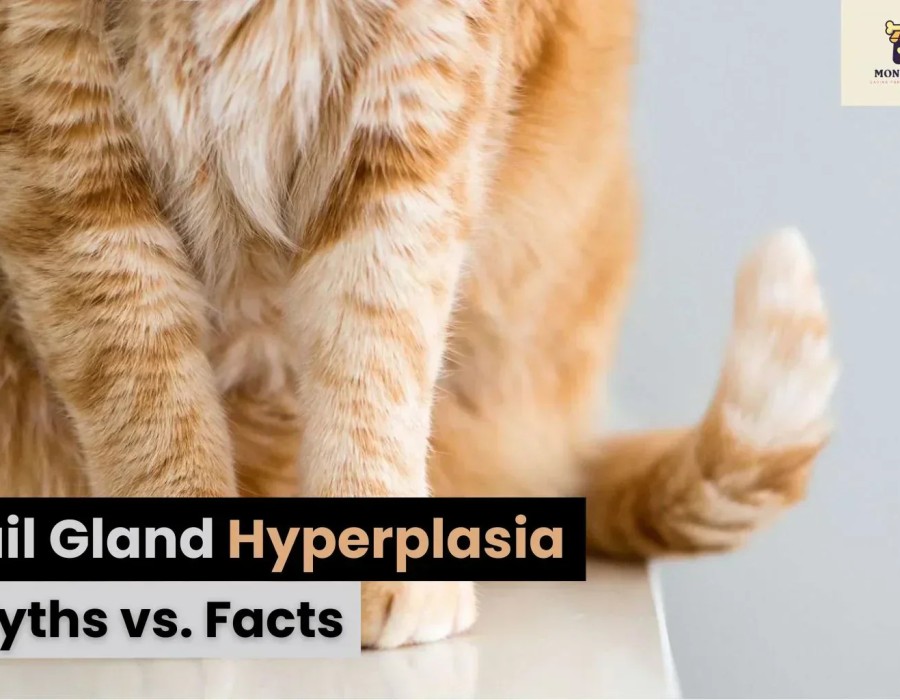Tail Gland Hyperplasia, also known as stud tail, is a skin condition most commonly found in unneutered male dogs but can also appear in females and neutered males. It affects the supracaudal gland—an oil gland located on the top side of the tail near its base.
This gland plays a role in producing pheromones and oils for scent marking, but in some cases, it can become overactive or inflamed, leading to noticeable symptoms like greasy hair, hair loss, scabbing, and odor.
Unfortunately, this condition is often surrounded by myths. Let’s separate the facts from fiction.
Common Myths vs. Facts About Tail Gland Hyperplasia
Myth 1: It Only Happens in Male Dogs
Fact: While more common in intact males, tail gland hyperplasia can also occur in females and neutered dogs. Hormonal imbalances, genetic predispositions, and skin health can all influence the development of the condition.
Myth 2: It’s Always a Sign of Poor Hygiene
Fact: Many owners assume the greasy patch or odor is due to lack of cleanliness. In reality, tail gland hyperplasia is a medical condition, not a hygiene issue. Even well-groomed dogs can develop this problem.
Myth 3: It’s Harmless and Doesn’t Need Treatment
Fact: While some mild cases may go unnoticed or resolve with grooming, severe or persistent cases require veterinary attention. If left untreated, it can lead to secondary infections, discomfort, and hair loss.
Myth 4: It Can Be Treated with Home Remedies Alone
Fact: While gentle cleaning and regular grooming may help in mild cases, moderate to severe cases often require medicated shampoos, antibiotics, or hormone therapy prescribed by a veterinarian. Home remedies alone are usually not enough.
Myth 5: It Means Your Dog Isn’t Neutered
Fact: Though the condition is strongly linked to testosterone, neutered dogs can still suffer from tail gland hyperplasia. Hormonal shifts and skin oil production don’t disappear overnight after neutering.
Symptoms to Watch For
If you suspect your dog may have tail gland hyperplasia, here are some signs to look for:
- Greasy or oily fur at the base of the tail
- Hair thinning or loss in the same area
- Blackheads or crusting
- Redness or inflammation
- Bad odor
- Your dog constantly licking or biting the tail
If you see these symptoms, it’s best to consult a vet for proper diagnosis and treatment.
How Is It Treated?
Treatment depends on the severity of the condition. Common approaches include:
- Medicated shampoos
- Topical or oral antibiotics (for infections)
- Hormone therapy or neutering (if linked to hormone imbalance)
- Laser treatment or surgical removal (rare, in extreme cases)
Always follow your vet’s instructions for the best outcome.
Preventing Future Flare-Ups
While some dogs may be more prone to tail gland issues due to genetics or hormones, you can help by:
- Keeping the tail area clean and dry
- Monitoring for early signs
- Maintaining regular veterinary checkups
- Considering neutering, if recommended
Final Thoughts
Tail Gland Hyperplasia is a real and treatable skin condition, not a result of poor grooming or neglect. Knowing the facts helps you make the best decision for your furry friend's comfort and health.
If you notice any unusual changes around your dog’s tail, don’t rely on online myths — reach out to your vet and get a proper diagnosis.
At Montynio.com, we’re here to help you stay informed and empowered with honest, helpful pet care content.






Comments